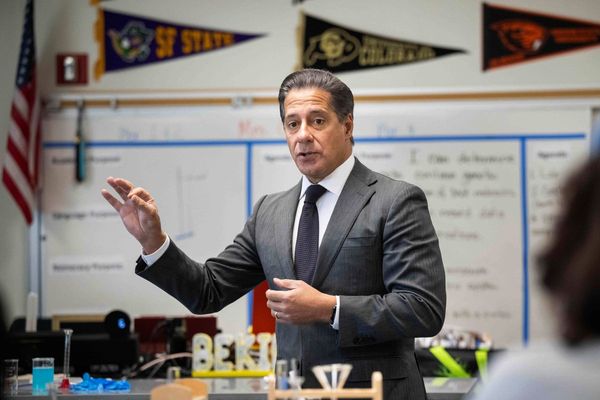The residents of Airstrip One in George Orwell's dystopian classic Nineteen Eighty-Four are used to the low-flying helicopter patrols of the Thought Police.
But when a helicopter flies low across Canberra backyards over the coming month, its crew will not be looking for thoughtcriminals.
The helicopter's light detection and ranging camera will be put to use identifying vegetation that has grown too close to Canberra's powerlines.
Evoenergy - which operates the ACT's electricity grid infrastructure - has contracted the helicopter to survey across Canberra suburbs and bushfire abatement zones.

The helicopter, which has been retrofitted with noise reduction technology, will fly at a height of no lower than 1000 feet, or 315 metres.
The growth rate of trees means the program is required each year.
"As you can appreciate in the last few years, there's been significant amounts of rainfall, so the growth rate, we call that extreme, so that warrants us needing to do the program annually," Timothy Juhasz, Evoenergy's group manager of network services, said.
Bronwyn Butterfield, Evoenergy's assistant group manager of customer delivery, said about 1200 kilometres of electricity lines would be inspected in the program.
"A large majority of those are actually in areas that are rural, and in what the Emergency Services Agency classifies as bushfire abatement zones," Ms Butterfield said.
"So part of flying over those is not only to let us know if we have any defects that we need to rectify, but it also provides that assurance that we are inspecting those regularly because there is a bushfire season each year. There's around about 90 suburbs that are also inspected as part of this, including a little bit in New South Wales."

Mr Juhasz LiDAR technology - which sent out a light beam to measure distances to the millimetre - was used to track vegetation and maintain privacy.
"So we're able to determine how far to the millimetre the vegetation or tree is to our network assets, and then we have a definitive accurate dataset that needs minimal review and data cleansing after the program," he said.
"If we took just photographs of the network, there'd be an extensive photo review process that would need to happen after the program, which would take a lot more time, which would be better spent actually rectifying those vegetation encroachments on the network."
Mr Juhasz said the program also meant there were no images of people's homes captured using the LiDAR camera.
A Canberra-wide preliminary flight is planned for Friday, with suburb flights from Monday, March 11. Evoenergy will update its planned flights each week.
Flights will take place between 8am and 4pm, Monday to Friday. Flights will be scheduled on Saturdays between 8am and 4pm if forced by poor weather conditions during the week.
The program is due to run between Friday, March 8 and Friday, April 5.
More information is available on the Evoenergy website: www.evoenergy.com.au/aerial-inspections







